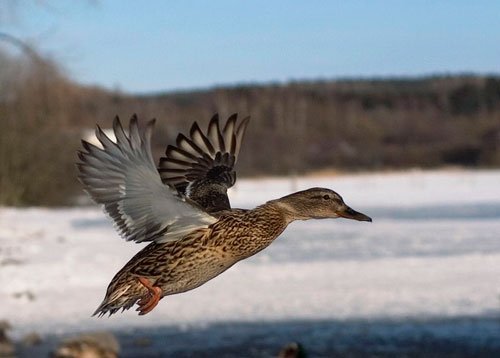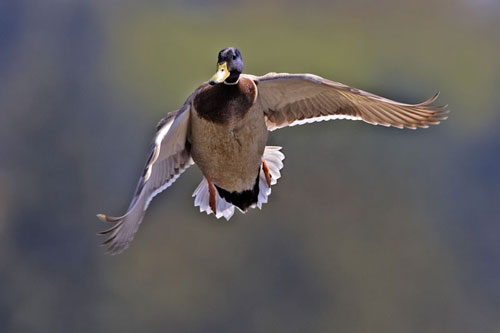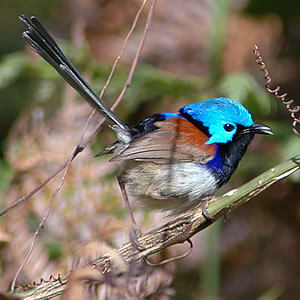Mallard
A mallard is what is known as a dabbling duck.
They are remarkably lovely in coloration and can weigh about 3 to 5 pounds, while the female weighs a bit less although she is about the same size.
The male is superb with a deep green head, black tail feathers and a yellow bill which boasts a black tip.

Female Mallard
The female Mallard is brown, like most female dabbling ducks; however, both the female and male Mallards have a deep teal coloration on their wings which is edged with white, and will show when they are in flight or at rest.
The size of the Mallard varies and birds from colder climates are larger than those from warmer climates but their beaks are smaller.
Mallard ducks live in mainly wet areas, including swamps, parks, ponds and rivers and will be seen feeding by dunking its head under water to gather plant food or sometimes fish or small frogs.
It will nest on the river banks or near a water source, and lives in large groups even when it is not breeding.
The Male mallard has a very nasal sort of sound but the female issues a hoarse quack even as she does in the children’s books.

Mallard Male
Mallards can live for many years but most live about 7-10. Although a 29 year old mallard has been recorded by researchers.
Mallard mate and stay together until the female lays her eggs when the male will leave her. She normally will have between 8 and 12 eggs, which she sits on to in cubage them for about 30 days.
When they hatch they are able to immediately swim and feed themselves. They eat insects and small plankton as soon as they are out of the eggs, but still stay near the mother for protection.
Small ducks, called ducklings, are not naturally waterproof. They rely on the mother for this.
Find out more about the Mallard over at Wikipedia »



